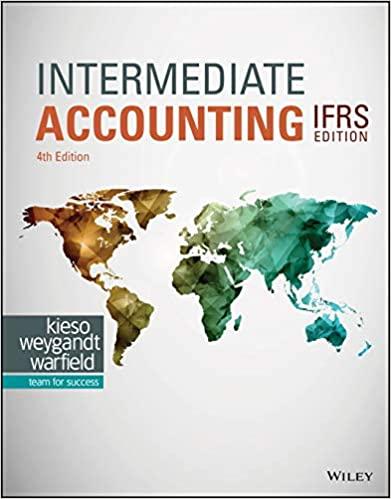
Net Present Value and Present Value Index Present Present Value of Net Cash Value of Net $1 at 12% Flow Cash Flow Year 1 Year 2 Year 3 Year 4 Year 5 Total Amount to be invested Net present value Present value index Present Present Value of Net Cash Value of Net $1 at 12%% Flow Cash Flow Year 1 Year 2 Year 3 Year 4 Your 5 Total Amount to be invested Not present value Present value induxfour proposals PR 26-6A Capital rationing decision for a service company involving OBJ. 2, 3, 5 Clearcast Communications Inc. is considering allocating a limited amount of capital invest- ment funds among four proposals. The amount of proposed investment, estimated income from operations, and net cash flow for each proposal are as follows: Investment Income from Net Cash Proposal A: Year Operations Flow $450,000 1 $ 30,000 $120,000 30,000 120,000 20,000 110,000 UTA W 10,000 100,000 (30,000) 60,000 Proposal B: $ 60,000 $510,000 bor $200,000 $ 60,000 $100,000 W N - 40,000 80,000 20,000 60,000 Veilla to saffimmoo (10,000) 30,000 (20,000) 20,000 WO $ 90,000 $290,000 Proposal C: $320,000 $ 36,000 $100,000 26,000 90,000 most amount W N Wall anolan 26,000 90,000 4 16,000 80,000 100 5 16,000 80,000 $120,000 $440,000 Proposal D: 090:00 $540,000 1 $ 92,000 $200,000 100.0% 72,000 180,000 W N 52,000 160,000 12,000 120,000 to inomalesent ne alupent to (8,000) 100,000 Sulev Jeubi $220,000 $760,000the company's capital rationing policy requires a maximum cash payback period of three years. In addition, a minimum average rate of return of 12% is required on s projects. If the preceding standards are met, the net present value method and present value indexes are used to rank the remaining proposals. Instructions 1. Compute the cash payback period for each of the four proposals. 2. Giving effect to straight-line depreciation on the investments and assuming no estimated residual value, compute the average rate of return for each of the four proposals Round to one decimal place. 3. Using the following format, summarize the results of your computations in parts (1) and (2). By placing the calculated amounts in the first two columns on the left and by placing a check mark in the appropriate column to the right, indicate which proposals should be accepted for further analysis and which should be rejected. Cash Payback Average Rate Accept for Proposal Period of Return Further Analysis Reject A B 4. For the proposals accepted for further analysis in part (3), compute the net present value. Use a rate of 12% and the present value of $1 table appearing in this chapter (Exhibit 2). 5. Compute the present value index for each of the proposals in part (4). Round to two decimal places. 6. Rank the proposals from most attractive to least attractive, based on the present values of net cash flows computed in part (4). 7. Rank the proposals from most attractive to least attractive, based on the present value indexes computed in part (5). 8. Based on the analyses, comment on the relative attractiveness of the proposals ranked in parts (6) and (7).Average Rate of Return Proposal A: Proposal B: Proposal C: Proposal D: Cash Payback Period Average Rate Accept for Proposal Years Months of Return Further Analysis











